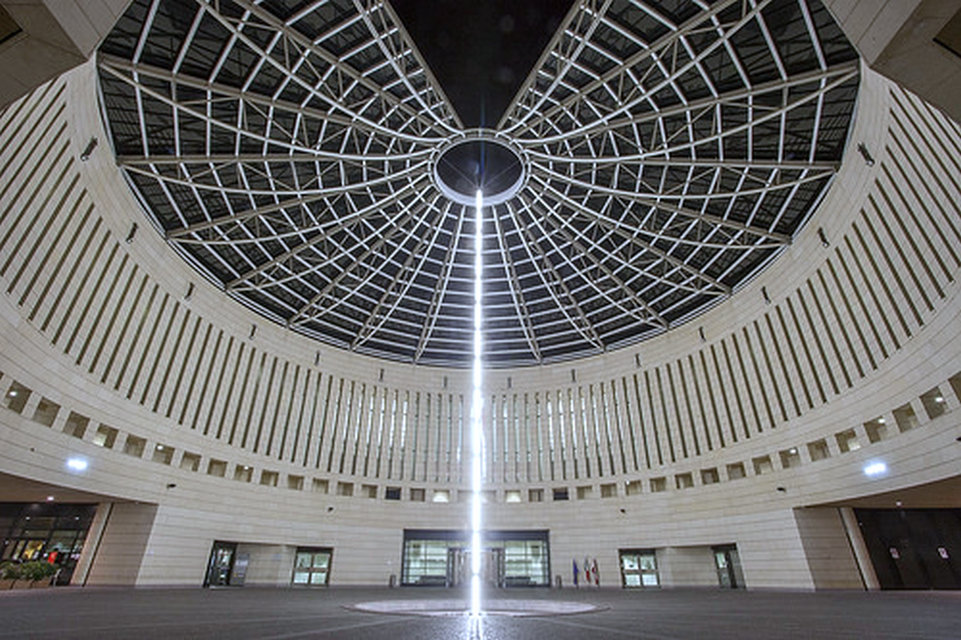Museum of modern and contemporary art of Trento and Rovereto, Italy


Originally posted 2017-03-17 12:28:42.
The Museum of Modern and Contemporary Art of Trento and Rovereto (MART) is a museum centre in the Italian province of Trento. The main site is in Rovereto, and contains mostly modern and contemporary artworks, including works from renowned Giorgio Morandi, Giorgio de Chirico, Carlo Carrà and Fortunato Depero. Fortunato Depero’s house in Rovereto (known as Casa d’Arte Futurista Depero) is also part of the Museum.
The permanent collection of the MART contains more than 15,000 artworks, including paintings, drawings, engravings, and sculptures.
Mart, Museum of modern and contemporary art of Trento and Rovereto, is one of the most important museums in Italy and also in Europe. Opening in 1987 as a practical body for the independent province of Trento, nowadays the Mart has three different sites: the main museum site, the Depero House of Futurist Art in Rovereto, and the Trento Civic Gallery. The latter has recently joined the Mart and will open next year with a new architecture project on the 19th October.
Opened in 2002, the main museum site is a large, architectural complex, designed by Mario Botta and Giulio Andreolli. Over ten years the museum has improved its collections and become an international player. Under the new management of Cristiana Collu (from 2012), the museum has positioned itself on the strategic front lines of innovation, sustainability and partnership.
Nowadays the Mart is an exhibition centre of European importance, a place for the land to listen and speak, a representative for international museums and a cultural centre providing stimulus for the public, artists, collectors and businesses.
The numerous masterpieces in the collections of the Museum, the rare materials stored in archives and the constant work on the scientific quality of the proposals, has enabled the Mart to consolidate collaboration with Italian and foreign museums and institutions with which they are constants loans and exchanges: during the last year, the Mart has collaborated, among others, with the Solomon R. Guggenheim Museum in New York, with the Fundació Catalunya la Pedrera in Barcelona, with the Vitra Design Museum in Weil am Rhein.
The MART originated in 1987 as an autonomous entity within the autonomous Trentino province. It was installed in the Palazzo delle Albere in Trento. The idea of expanding the museum in order to combine both the legacy of the great futurist Fortunato Depero and the disparate inheritance held by the Trento Regional Arts Museum (“Museo Provinciale d’Arte di Trento”) dates back to 1991, and was the project, in the first instance, of Gabriella Belli.
On 15 December 2002 the MART finally opened to the general public, with a new headquarters at Rovereto, a small town a short distance to the south of Trento.
Design of the new building was entrusted to the Ticinese architect Mario Botta, who worked on its development with the Rovereto structural engineer Giulio Andreolli. A 29,000 square metre site was available, but between the site and the road (Via Bettini) allowance had to be made for two substantial eighteenth century town houses (“”Palazzi). Fortunately there is a gap between the two which provides sufficient space for an entrance.
Botta’s solution to the challenges of the site draws inspiration from classical forms (notably that of the Pantheon), but also incorporates technically adventurous solutions. Invoking the mantra, “Space for art, not space despite art”, the design involves a “pantheon without a facade”, involving three storeys of museum space arranged around a large round “agora”, covered over with “glass” dome/cupola with a 40-meter diameter. The structure of the cupola makes extensive use of steel and “plexiglass”, and includes a “missing slice” made possible by complex engineering solutions. in the central area beneath the cupola there is a fountain. The wall facings make use of the yellow stone from Vicenza, which was the stone favoured by Andrea Palladio, although the innovative way in which the facing slabs have been attached allows for each to be individually replaced without major structural upheavals, in a way owes little to the sixteenth century architectural maestro. The “agora” can accommodate up to 1,200 visitors.